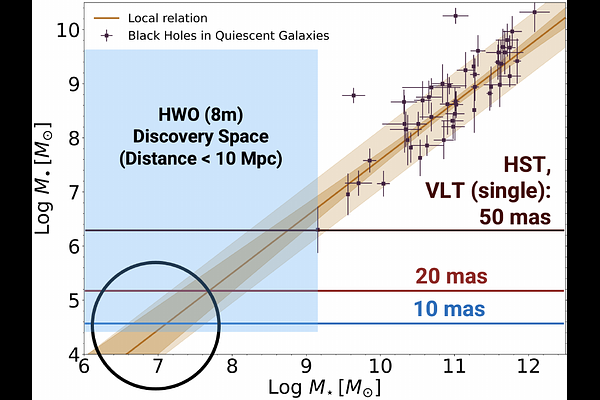Exploring the Quiescent Black Hole Population of Nearby Dwarf Galaxies with the Habitable World Observatory

Exploring the Quiescent Black Hole Population of Nearby Dwarf Galaxies with the Habitable World Observatory
Fabio Pacucci
AbstractThe formation and growth of supermassive black holes (SMBHs) remain a significant unsolved problem in astrophysics, particularly in the low-mass regime, where observations are sparse. The Habitable Worlds Observatory (HWO), with its diffraction-limited imaging and high-resolution UV-optical spectroscopy, presents a unique opportunity to explore the demographics of massive black holes (MBHs) in nearby dwarf galaxies. We propose a program to dynamically detect quiescent MBHs with masses as low as $10^{4.5} \, \rm M_\odot$ in galaxies within $10-30$ Mpc, by resolving stellar velocity dispersions down to 30 $\rm km \, s^{-1}$. This effort will dramatically extend current black hole-host galaxy scaling relations into the dwarf regime, probing the fundamental connection between black hole seeds and their environments. Using a volume-limited sample of $\sim 100$ dwarf galaxies drawn from existing catalogs, HWO will resolve the gravitational sphere of influence of MBHs and enable precision measurements of stellar kinematics via Ca II triplet absorption lines. These observations will test predictions from competing seed formation scenarios -- light seeds from Population III remnants versus heavy seeds from direct collapse -- and clarify whether dwarf galaxies retain imprints of their initial black hole population. The results will offer critical insight into SMBH formation channel and the co-evolution of black holes and galaxies across cosmic time.